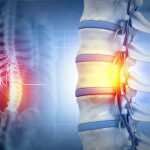With Wimbledon underway once again this summer, we’ve taken a look at the ways stem cells are revolutionising one of Britain’s best-loved sports: tennis.
The origins of the sport date back thousands of years and in the 1500s, both Henry VII and Henry VIII were fans. They both commissioned the creation of tennis courts across England, and the sport has since become one of the nation’s favourites.
Yet tennis comes with a downside: it is a fast sport played on a variety of surfaces, and can result in a range of serious sports injuries. Between 2003 and 2012, an injury occurred in 20 of every 1000 sets played.
Just last year, Andy Murray looked set to retire due to a hip injury and others, such as Rafael Nadal, have similarly suffered for the sport.
What are some common tennis injuries?
The most common conditions relating to the sport are tendon damage and more specifically, ‘tennis elbow’.
The painful condition is a form of tendonitis, which causes discomfort on the outside of the elbow. It’s estimated that up to 50% of tennis players will experience this condition during their time playing the sport [2]. It also affects 1-3% of the population at large.
Could Stem Cell Injections Give Tendonitis the Elbow?
In cases of tendonitis, poor blood supply limits the amount of nutrients and growth factors that can be delivered to the site of the injury, which impairs the body’s ability to heal itself.
Damaged tendons can be treated in a variety of ways, but they are notoriously difficult to heal. For some patients, treatments are unsuccessful, and surgery may be required.
However, stem cell injections could offer an alternative option. A recent study on a group of 30 patients found that just one injection of stem cells from bone marrow to treat tennis elbow showed significant improvement in short- and medium-term follow-ups.[3]
What are the symptoms of tendonitis?
- Tendon pain (in your knee, elbow or shoulder) which is exacerbated by movement
- Difficulty with moving the tendon
- A grating or crackling sensation when the tendon moves
- Swelling, heat or redness
- A lump along the tendon

Credit: Rafael Nadal (ESP) def. John Isner (USA), Roland Garros 2011 – mardi 24 mai – 1er tour – Court Philippe Chatrier
Stem Cells Ensure Lumbar Pain Backs Off
Lower back pain is another common complaint for tennis players. Rafael Nadal, for example, received stem cell therapy for an injury sustained to his back in 2014.
Nadal’s treatment involved cultivating his stem cells and injecting them into a joint in his spine to regenerate his cartilage. There was also hope that they would have an anti-inflammatory effect.[4]
Today, there are 39 clinical trials investigating the application of stem cells in back pain.[5]
Stem Cell Therapy Gives Rotator Cuff Injuries the Cold Shoulder
Rotator cuff injuries in tennis players are generally caused by the stress of repetitive movements to the ball and socket joint – particularly tennis strokes and the initial serve.
Treatment for an injured rotator cuff depends on the type and severity of the injury. Where muscles have been torn, surgery may be required – especially if a tear is the result of a sudden injury or if there has been no improvement after physiotherapy and steroid injections.[6]
Unfortunately, despite the improvement of surgical techniques, 25% of rotator cuff injuries will re-tear after surgery.[7] However, a study using stem cell injections during surgery showed significant healing in patients with this problem.
The study used mesenchymal stem cells that were taken from bone marrow, and found that 87% of patients treated with stem cells still had their rotator cuffs intact after ten years, compared to just 44% of the control group.[8]
Stem cells take the upper hand against knee and hip pain
In recent years, Andy Murray has famously suffered with a severe hip injury that has jeopardised his career and almost forced him into early retirement.
While the tennis ace has said traditional surgeries were insufficient for his injury, it has been reported that stem cells could be the answer. Today, regenerative medicine clinics inject stem cells into patients with joint osteoarthritis as it forms new cartilage.
One recent study treated 12 patients with moderate-to-severe knee osteoarthritis and found that they experienced a significant reduction in pain and an increase in quality of life after one year of receiving stem cells.[9]
Stem Cells Therapies Serve Additional Support
Stem cell treatments are rising through the ranks to give players more effective personalised treatments, and longevity in their careers. The potential of regenerative treatments cannot be underestimated, especially for those who play sports at a professional level.
Difficult-to-heal-injuries may no longer be career-ending, as pioneering stem cell treatments are improving healing outcomes.
Their uses extend well beyond tennis. Other athletes such as Cristiano Ronaldo, David Beckham and golf pro Jack Nicklaus have also recovered from injuries thanks to a stem cell therapy and as regenerative medicine progresses, it is likely that treatments will become available to more and more people.
References
[1] http://www.forbes.com/sites/monteburke/2012/05/30/what-is-the-most-prestigious-grand-slam-tennis-tournament/#57fd281c5666
[2] https://www.bmihealthcare.co.uk/health-matters/consultant-qa/tennis-injuries
[3] http://www.ncbi.nlm.nih.gov/pmc/articles/PMC4121921/
[4] https://www.theguardian.com/sport/2014/nov/10/rafael-nadal-stem-cell-treatment-back
[5] https://clinicaltrials.gov/ct2/results?term=back+pain+stem+cells&Search=Search
[6] http://patient.info/health/rotator-cuff-disorders
[7] http://www.medscape.com/viewarticle/842245
[8] http://www.ncbi.nlm.nih.gov/pubmed/24913770
Request a Welcome Pack
Find out more about cord blood banking by downloading a Welcome Pack now.








